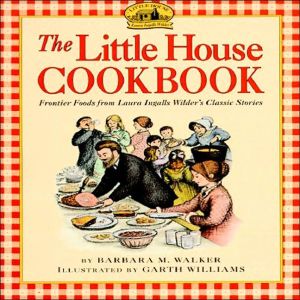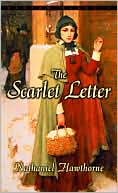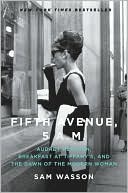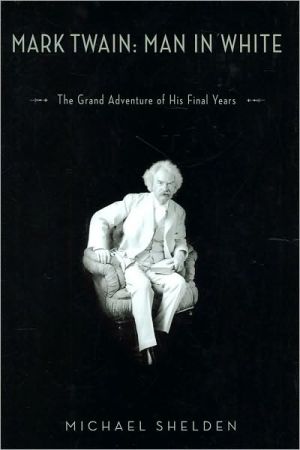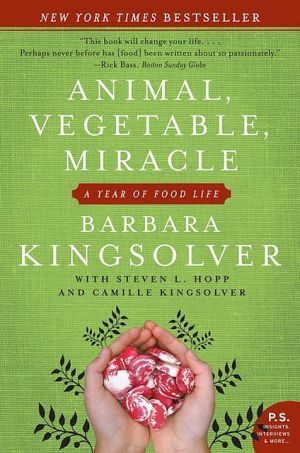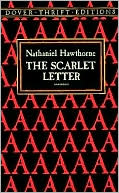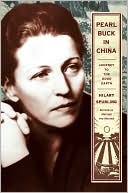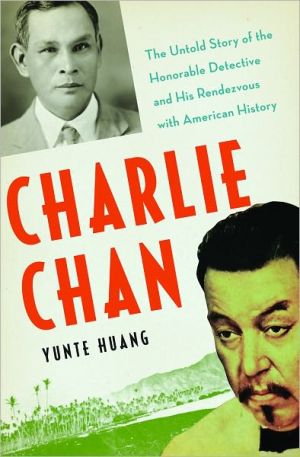Little House Cookbook: Frontier Foods from Laura Ingalls Wilder's Classic Stories
More than 100 recipes introduce the foods and cooking of Laura Ingalls Wilder’s pioneer childhood, chronicled in her classic Little House books.\ Notable Children’s Books of 1979 (ALA)\ Best Books of 1979 (SLJ)\ Notable 1979 Children's Trade Books in Social Studies (NCSS/CBC)\ Children's Books of 1979 (Library of Congress)\ 1980 Western Heritage Award\ \ \ From daily bread to a full-course Christmas dinner, here are more than 100 recipes introducing the foods and...
Search in google:
More than 100 recipes introduce the foods and cooking of Laura Ingalls Wilder’s pioneer childhood, chronicled in her classic Little House books.Notable Children’s Books of 1979 (ALA)Best Books of 1979 (SLJ)Notable 1979 Children's Trade Books in Social Studies (NCSS/CBC)Children's Books of 1979 (Library of Congress)1980 Western Heritage AwardHorn BookA Culinary and literacy Feast.
Chapter One\ Food in the Little Houses\ Laura Ingalls Wilder was born in Pepin, Wisconsin, in 1867. In 1932, when she was sixty-five years old, she wrote her first book, Little House in the Big Woods, a lightly fictionalized account of her childhood days in her first frontier home. The next year she followed with Farmer Boy, recounting her husband Almanzo's boyhood on the prosperous Wilder dairy farm outside Malone, New York, not far from the Canadian border. During the next ten years she wrote and published the seven books that have, with the first two, become known around the world (and in fifteen languages) as the "Little House" books-Little House on the Prairie, On the Banks of Plum Creek, By the Shores of Silver Lake, The Long Winter, Little Town on the Prairie, These Happy Golden Years, and The First Four Years. In them she traced the migration of her family-Ma, Pa, and sisters Mary, Grace, and Carrie-from Pepin to the southern Kansas border, on to Walnut Grove, Minnesota, to Silver Lake, South Dakota, and finally to DeSmet; South Dakota. These Happy Golden Years is set on the Homestead Act claim settled by the Ingallses outside DeSmet; it ends with Laura's marriage at eighteen to Almanzo Wilder. The First Four Years tells of their life together on their own claim not far away.\ Throughout this now classic series much of the action centers on food---hunting it, growing it, losing it to natural disasters, cooking it, preserving it, and eating it. On the frontier, feeding the family was a task that took most of everyone's time.\ For Pa there was no weekly paycheck to be exchanged for shelter, clothing, and groceries. Pa pursued thefood with gun, trap, and plow; Ma prepared and preserved it; and the children helped in both activities.\ Food also looms large in this pioneer chronicle because there was rarely enough of it. Though she tells of being listless and weak from near-starvation during the Long Winter, the storybook Laura never complains of hunger. Yet the real grownup Laura's memory for daily fare and holiday feasts says more about her eagerness for meals, her longing for enough to eat, than it does about her interest in cooking. Farmer Boy is not merely her husband's story; it is her own fantasy of blissful youth, surrounded on all sides by food.\ The Wilders were established farmers in an area that favored dairy herds and offered a market for dairy products. Caroline Quiner and Charles Ingalls-Ma and Pa-had been raised as farmers, but on land newly turned to the plow. Ma and Pa would carry on the pioneer tradition of their parents, struggling to establish a farm with cash crops, products to sell, but living meanwhile as nomads, off staples from the country store and food from the wilds.\ It was their migrant life, as much as the seasons, that shaped the Ingallses' diet, and this fact provides the organizing principle of our recipes. Basic to their lives were the tools and staples that could be paid or bartered for, regardless of place or season. Next in importance were the gifts of Nature-fish from the rivers, berries from the brush, game from the woods and prairies-to be gathered in the summer and fall and preserved for winter and spring. Bread from their own wheat was the Ingallses' dream; usually it was made from store flour. Fresh garden vegetables and barnyard meats and eggs and cheeses were, for both Laura and Almanzo, childhood fare that became elusive prizes.\ Neither Mother Wilder nor Ma knew anything of the science of nutrition; vitamins and vitamin deficiencies are discoveries of the twentieth century. But they knew that a diet varied enough to please the palate and eye was likely to be a healthful one as well. Picture, If you will, this Sunday dinner on the Wilder farm:\ If this seems heavy with starches and sweets, remember that it was served to a family accustomed to hard physical labor and unaccustomed to centrally-heated houses. And that it was described by an author who ate far more cornmeal, lean game and wild fruits as a child than breads, fats, and desserts. A special meal on the prairie-the one for Mr. Edwards, for instance, consisted of "stewed jack rabbit with white-flour dumplings and plenty of gravy . . . steaming-hot cornbread flavored with bacon fat ... molasses to eat on the cornbread" and coffee sweetened with brown sugar.\ Celebrations and social gatherings were a time for eating. Socializing for young and old took the form of church suppers and evenings at home popping corn or pulling candy. But the reverse was not always true; mealtimes were not a time for socializing. Usually children were permitted to speak only when spoken to. Both Almanzo and the Ingalls girls were fortunate in having parents who conversed at the table and included them. Certainly they were better off than many colonial children, a century earlier, who stood by as their parents occupied the only chairs at the table and waited for morsels from grownups' plates.\ As the Ingallses moved westward into more primitive conditions, the eastern United States was in the throes of the Industrial Revolution. The Great Centennial Exhibition of 1876 was virtually a preview of the twentieth century. Visitors to its vast Philadelphia site could see Alexander Graham Bell and his new telephone, observe a demonstration "kindergarten," and hear joseph Lister expound his latest discoveries about disinfecting wounds. They could dine on the most cosmopolitan fare in restaurants featuring French, German, Austrian, and Chinese dishes.\ That same year, 1876, the storybook Laura was eight (nine in real life) and living "on the banks of Plum Creek." Her family had just moved from the Kansas prairie, where the cooking was done, as it had been done for centuries, in an open fireplace. Her new home had a wonderful surprise for Ma, an iron cookstove. More up-to-date than the Wisconsin stove, it had a "big door on the side" which opened to show a "big square place with a shelf across it"; in other words, an oven.\ In experiencing both hearth cooking and stove cooking, Laura witnessed the greatest change in the whole history of home cookery. She would live to see many more changes-to kerosene and coal stoves, to gas and electric stoves, and to automatic coffee pots and electric dishwashers-and she would never lose her sense of wonder about them. On a visit to her daughter in San Francisco in her forty-eighth year, she wrote to Almanzo, "Aladdin with his wonderful lamp had no more power than the modern woman in her kitchen.\ The Little House Cookbook. Copyright © by Barbara Walker. Reprinted by permission of HarperCollins Publishers, Inc. All rights reserved. Available now wherever books are sold.
\ Horn BookA Culinary and literacy Feast.\ \
